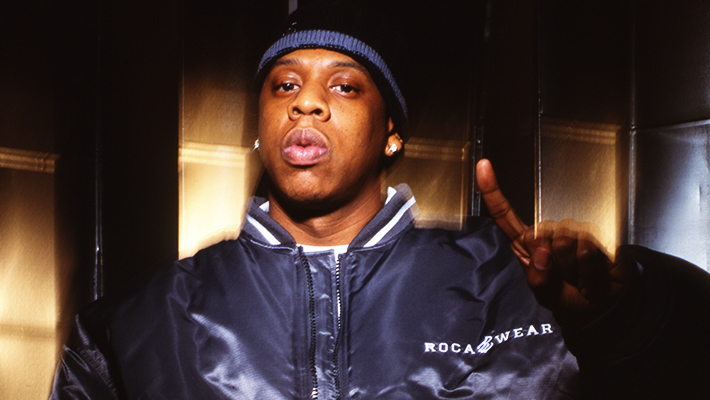Jay-Z had climbed to the top of the commercial mountain by 2000. The Brooklyn rhymer had long been respected in the streets, but his Vol. 2… Hard Knock Life and Vol. 3… Life and Times Of S. Carter projects sold five and three million copies respectively. He was one of the biggest reasons for Def Jam’s commercial resurgence, and the label’s legendary 1999 tour was named after his “Hard Knock Life” hit. He was undeniably on the top-tier of mainstream rap.
But being the biggest rapper in the world wasn’t Jay’s only goal. He and his Roc cofounders Dame Dash and Kareem “Biggs” Burke were out to be moguls. The next thing for the Brooklynite to do was to use his hard-earned star power to entrench his Roc-A-Fella signees. Enter The Dynasty Album: Roc La Familia, an album that turned 20 years old on Saturday.
In true rap form, the title of the project was a bit of embellishment that became a self-fulfilling prophecy. Jay’s longtime protege Memphis Bleek hadn’t yet ascended as the heir to the throne he was marketed as. Beanie Sigel’s February 2000 The Truth album had made an impact in the streets, but neither he nor the State Property crew was household names yet. The project was more equivalent to the first playoff run than a dynastic victory lap. But thanks to the efforts of Beans, Bleek, Freeway, and then unheralded producers Bink, Rick Rock, The Neptunes, and Just Blaze, the Roc-A-Fella crew set a strong precedent for their historical run over the next several years.
The Roc-A-Fella roster that appeared on The Dynasty: Roc La Familia was an overhaul of the crew that was around for Jay’s Reasonable Doubt debut. Jay’s close collaborator Sauce Money chose to sign with Priority. Jay’s mentor Jaz-O didn’t sign with the label and eventually fell out with them. Da Ranjahz also left the label before they made much of a mark. In 1999 they signed Beanie Sigel, who had been making waves in Philly rhyming with The Roots and dropping memorable freestyles. The team made him the helm of a State Property collective that also contained Philly artists Freeway, Oschino, and Omlio Sparks (the Young Gunz Neef Bucks and Young Chris came a bit later).
Roc-A-Fella co-founder Dame Dash has recalled that the project was initially set to be a compilation to showcase the team’s roster. But they put Jay-Z’s name on it to attract more fans.
His work on The Dynasty “Intro ” immerses listeners into the project like few album starters have ever done. Jay was on top of the world, but he was also in legal hot water after a stabbing incident in December 1999 which had him facing 15 years. The media coverage around the incident served to show him that no matter how far he had come economically, a segment of white America still viewed him as a mere drug dealer from Marcy. Jay gave a glimpse of his mindset back then, reflecting on his “keen senses ever since I was a teen on the benches / Every time somebody like Ennis (Cosby) was mentioned.” Then upstart-New Jersey producer Just Blaze’s towering sample of Kleeer’s “She Said She Loves Me” sets an immediate intrigue for the project. Blaze soon became legendary for anthemic, larger-than-life production, and “Intro” was the setoff. The track is a freestyle essential to this day, and is regarded by many as the best intro ever.
The album is like a sequential glimpse of rap’s turn-of-the-millennium transition. Rick Rock provided the tinny, synth-driven production like “Change The Game” and would-be lead single “Parking Lot Pimpin.” The bouncy tracks were tailor-made to fit in any club or radio rotation at the moment. But Just Blaze’s contributions to the project showed where the game was going. He knew how to manipulate samples to do whatever he wanted them to do. There was the searing “Streets Is Talking,” the invigorating “You, Me, Him, And Her” with the whole crew trading bars, and the soaring horns on “1-900-Hustler.”
The project was executive produced by Jay, Dame, and Biggs, and Kyambo “Hip Hop” Joshua was an associate producer. Like all great leaders, the men made sure everyone on the project was put in an ideal position to shine. Hit-Boy recently mentioned that Jay-Z helped him sequence Benny The Butcher and Freddie Gibbs’ “One Way Flight.” That sequential mastery is on display throughout “1-900-Hustler,” especially Freeway’s uproarious verse, where he tears through a comedic lull with his dire, suspenseful presence. The moment was an ideal introduction to Free even before 2003’s “What We Do.” Memphis Bleek unleashed his energetic presence on tracks like “You, Me, Him, and Her” and “Change The Game.”
The album’s gun-toting, champagne spilling, and brick-flipping didn’t represent the full breadth of these men’s experience. They had a lot of fun on Dynasty, but they also got real. Beanie Sigel is as gutter as it gets (in hindsight, to a cringeworthy degree on “Stick To The Script”), and did his thing on the club tracks, but he’s at his best when he’s delving deep. On “Streets Is Talking” he explores the downside of the game with Jay-Z, lamenting, “The streets is not only watchin’ but they talkin’ now? / Sh*t, they got me circlin’ the block before I’m parkin’ now.” On “Where Have You Been,” he brilliantly takes listeners through the volley of emotions while imagining a painful conversation with his absentee father.
He also shines on “This Can’t Be Life,” where Jay-Z and Scarface also got vulnerable. Younger fans may perceive the drug epidemic’s presence in rap as a new thing, but back in 2000 Beans was admitting, ”I’m tired of trying to hide my pain behind the syrups and pills / Dead to the world, stretched out like a corpse for real.” Jay-Z is the epitome of confidence, but he admitted a time when he thought, “’Damn, I’ma be a failure’ / Surrounded by thugs, drugs, and drug paraphernalia.” And Scarface got tragically meta, rewriting his original verse and recalling that he was just informed that a friend’s baby had died in a fire. Jay-Z recalled in Decoded that Scarface was in fact about to get in the booth when he got the call. Instead of recording on another day, he explored his pain and delivered an unforgettable verse.
The track’s production was one of Kanye West’s breakout moments. When Kanye references, “the old Kanye,” he mentions the “chop up the soul Kanye.” His work on “This Can’t Be Life’s” doleful, evocative production is a quintessential example. A writer had no choice but to dig deep on a beat like that. That’s surprisingly Kanye’s only placement on the project.
Another one-off placement was The Neptunes’ production for “I Just Wanna Love U (Give It 2 Me),” a classic track that marries the Virginia production crew’s funky, upbeat wheelhouse with chimey synths that accentuated one of Jay-Z’s most memorable singles. The track is a quintessential early ‘00s club track, with Jay-Z telling a story of a wild night out and getting flirty, crude, braggadocious, and materialistic as ever without sacrificing his penmanship. Britney Spears has said that “Give It 2 Me” beat inspired her to reach out to The Neptunes, which helped them break into the pop market. Even though The Neptunes weren’t officially under the Roc umbrella, they, like so many other artists, had their upward trajectory expedited by The Dynasty.
The project was a highlight reel of the 2000s’ most gifted artists, who were all, unbelievably, under one roof. Everyone knows how The Dynasty ended, with “the team having beef between the post and the point” as Jay-Z rhymed on “Black Republican.” The reason that people ask Roc members about the label’s fallout to this day is because of how amazing the output was when everything was clicking. From artists to executives, the industry is run by former (and current) Roc employees. Almost all fans wanted the team to push into the 2010s and beyond. But at this point, it’s best to just be appreciative of what we did get, like The Dynasty.





